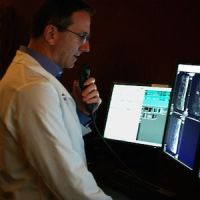Mentoring is an important component of academic medicine, yet it is not specifically emphasised in radiology training, according to a review to appear in the journal Current Problems in Diagnostic Radiology. Researchers found that many academic radiology departments in the U.S., Canada and elsewhere do not have formal mentoring programmes for medical students, residents, fellows, or junior faculty.
See Also: Artificial Intelligence Virtual Radiology Consultant
Mentoring refers to counselling, teaching, and advising by "a trusted friend, counsellor, or teacher, usually a more experienced person." Mentoring may occur naturally but sometimes mentors should be actively sought – in one’s own department, hospital, or elsewhere – both within and outside of the mentee’s primary field of study. Having more than one mentor can also be advantageous, as mentors can serve complementary advisory roles. To identify an appropriate mentor, mentees should first reflect on their own needs, goals, and personal work style. They can then meet with faculty in their department to ask about available mentors and who might be a good fit.
Previous reviews of the literature on mentorship and career choice in academic medicine suggest that effective mentoring is associated with greater research productivity, successful grant applications, and faster promotions on academic tracks.
Mentor vs. Educator
Although there are some degrees of intersecting roles, it is particularly important to distinguish the defining roles of mentors from those of educators. The primary role of a medical teacher is to convey knowledge and to aid students and residents and fellows in developing clinical and diagnostic competency in patient care during training.
In contrast, mentoring takes on developing a personal relationship premised on mutual agreement and reciprocal interaction that focuses on achieving specific career goals. It has been described as “a personal relationship in a professional context.” For example, mentors may provide residents, fellows and junior faculty with research opportunities and guidance, as well as career advancement and networking opportunities. More than practical guidance, mentors also frequently provide emotional support, counselling, and empathy.
Altruism is an important attribute of a mentor. Being altruistic requires that the mentor understand and prioritise the best interest of the mentee, without interposing his or her own standards. Also, honesty, reliability/trustworthiness, and being an active listener are crucial elements of an effective mentor.
Mentoring in Radiology
Students interested in pursuing radiology will have many questions that can be understandably anxiety-provoking, especially if unanswered. Mentors who are well versed in the residency admissions process and in the field of radiology can effectively alleviate some of the anxiety, and help to build confidence in medical students undertaking the residency application process.
Without institutional recognition of mentoring as a valued asset to academia, there may be limited opportunities for students to interact and work with radiology faculty. It is ultimately the students’ decision to pursue radiology as their life-long medical career.
Specific mentoring needs may evolve as trainees progress in their career path. A single important competency to achieve as a radiology resident is of course to learn to become an effective clinical radiologist. Programme directors and senior residents should collaborate to welcome new residents to discuss any challenges or difficulties they may have, and to actively create supportive venues for these discussions. Assignment of faculty advisors may be helpful especially in the early developmental stages of training, to serve as a bridge until advanced, specialised mentoring is needed.
Conclusion
Successful mentoring in radiology benefits all generations of radiologists, both mentees and mentors. It is even more important for managing the present and upcoming challenges which newer generations of radiologists may face, and to ensure the future of radiology. Rewarding faculty members for voluntary mentoring and instituting a mentoring programme with the flexibility to switch mentors later on are both potential ways to encourage healthy and successful mentoring.
Source: Current Problems in Diagnostic Radiology
Image Credit: Pixabay
References:
Kostrubiak, Danielle E. et. al. (2017) Mentorship in Radiology. Current Problems in Diagnostic Radiology; doi.org/10.1067/j.cpradiol.2017.02.008
Latest Articles
Radiology, mentorship, radiology training
Mentoring is an important component of academic medicine, yet it is not specifically emphasised in radiology training, according to a review to appear in the journal Current Problems in Diagnostic Radiology.



























